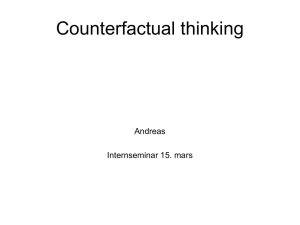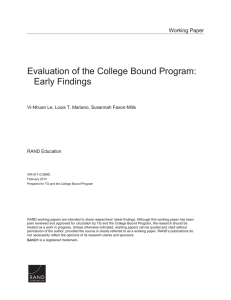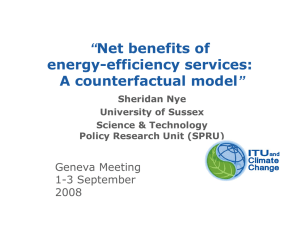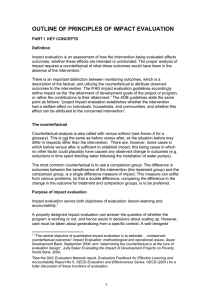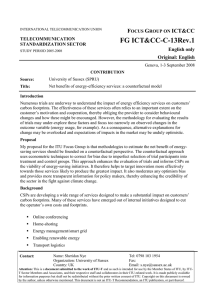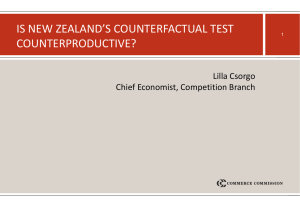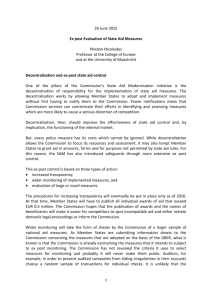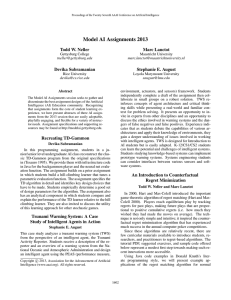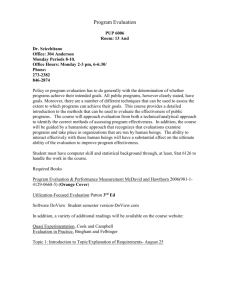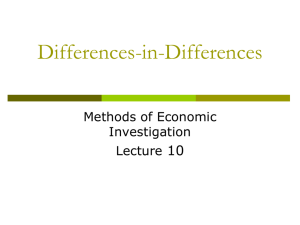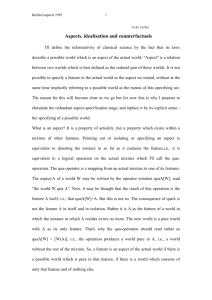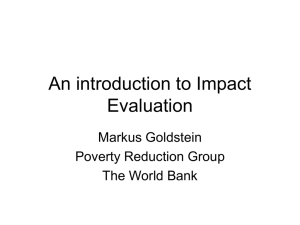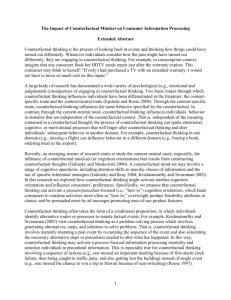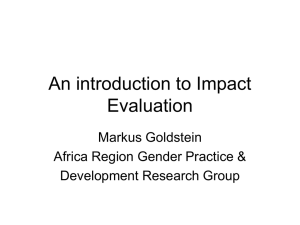Diff in Diff cheat sheet
advertisement
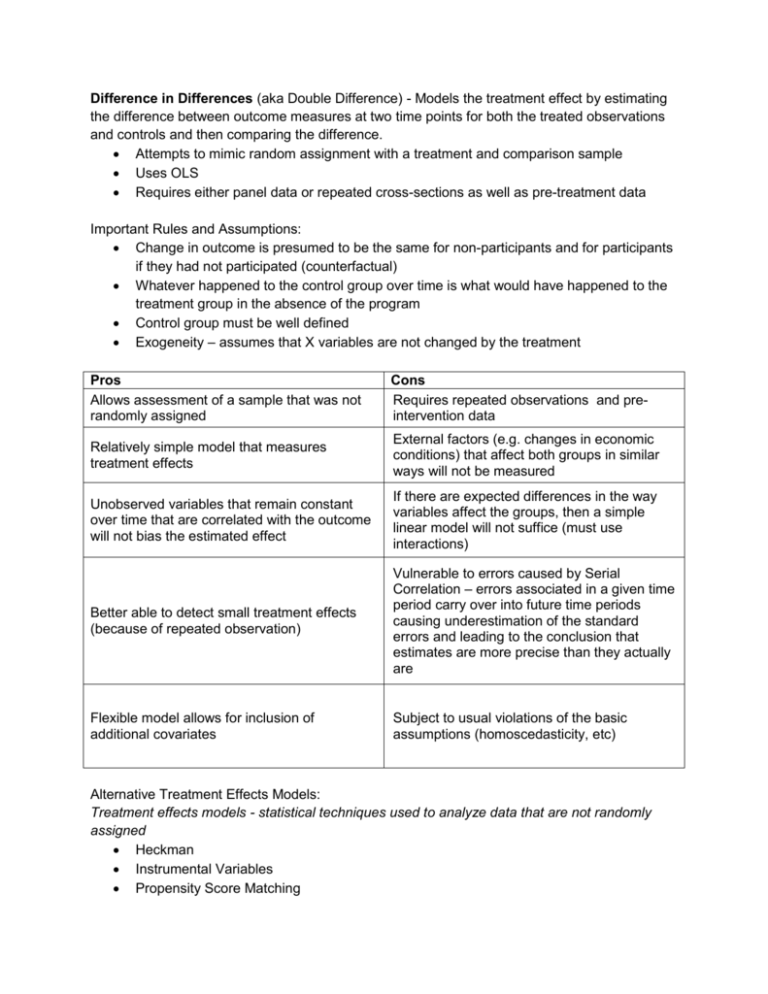
Difference in Differences (aka Double Difference) - Models the treatment effect by estimating the difference between outcome measures at two time points for both the treated observations and controls and then comparing the difference. Attempts to mimic random assignment with a treatment and comparison sample Uses OLS Requires either panel data or repeated cross-sections as well as pre-treatment data Important Rules and Assumptions: Change in outcome is presumed to be the same for non-participants and for participants if they had not participated (counterfactual) Whatever happened to the control group over time is what would have happened to the treatment group in the absence of the program Control group must be well defined Exogeneity – assumes that X variables are not changed by the treatment Pros Allows assessment of a sample that was not randomly assigned Cons Requires repeated observations and preintervention data Relatively simple model that measures treatment effects External factors (e.g. changes in economic conditions) that affect both groups in similar ways will not be measured Unobserved variables that remain constant over time that are correlated with the outcome will not bias the estimated effect If there are expected differences in the way variables affect the groups, then a simple linear model will not suffice (must use interactions) Better able to detect small treatment effects (because of repeated observation) Vulnerable to errors caused by Serial Correlation – errors associated in a given time period carry over into future time periods causing underestimation of the standard errors and leading to the conclusion that estimates are more precise than they actually are Flexible model allows for inclusion of additional covariates Subject to usual violations of the basic assumptions (homoscedasticity, etc) Alternative Treatment Effects Models: Treatment effects models - statistical techniques used to analyze data that are not randomly assigned Heckman Instrumental Variables Propensity Score Matching Helpful links: http://pareonline.net/getvn.asp?v=8&n=24 http://ec.europa.eu/regional_policy/sources/docgener/evaluation/evalsed/sourcebooks/method_t echniques/counterfactual_impact_evaluation/difference-in-differences/difference-indifferences_en.htm
